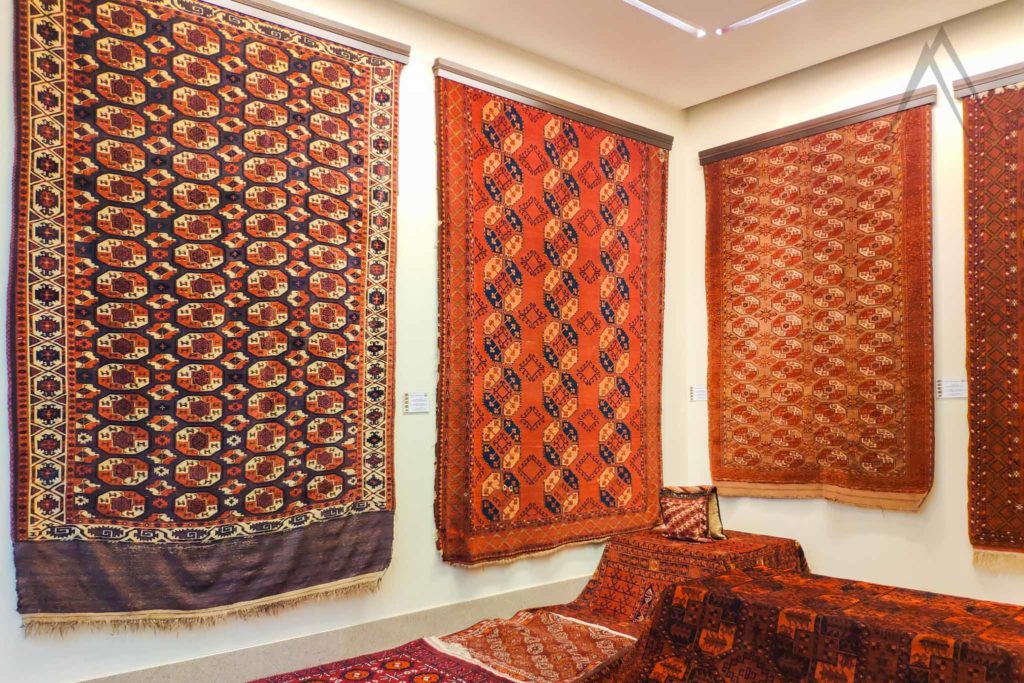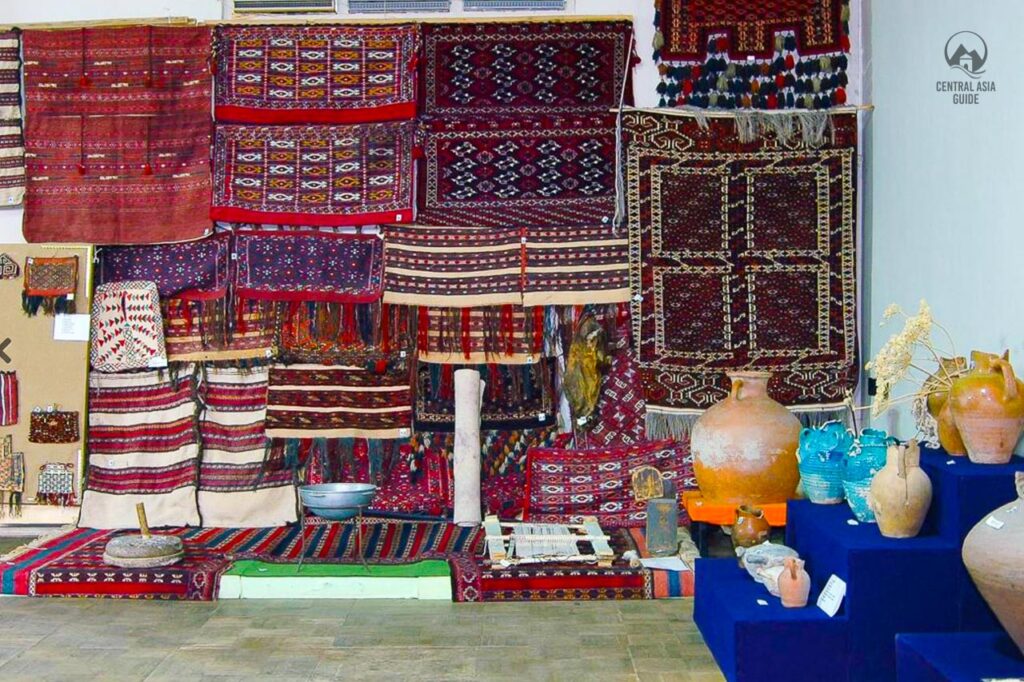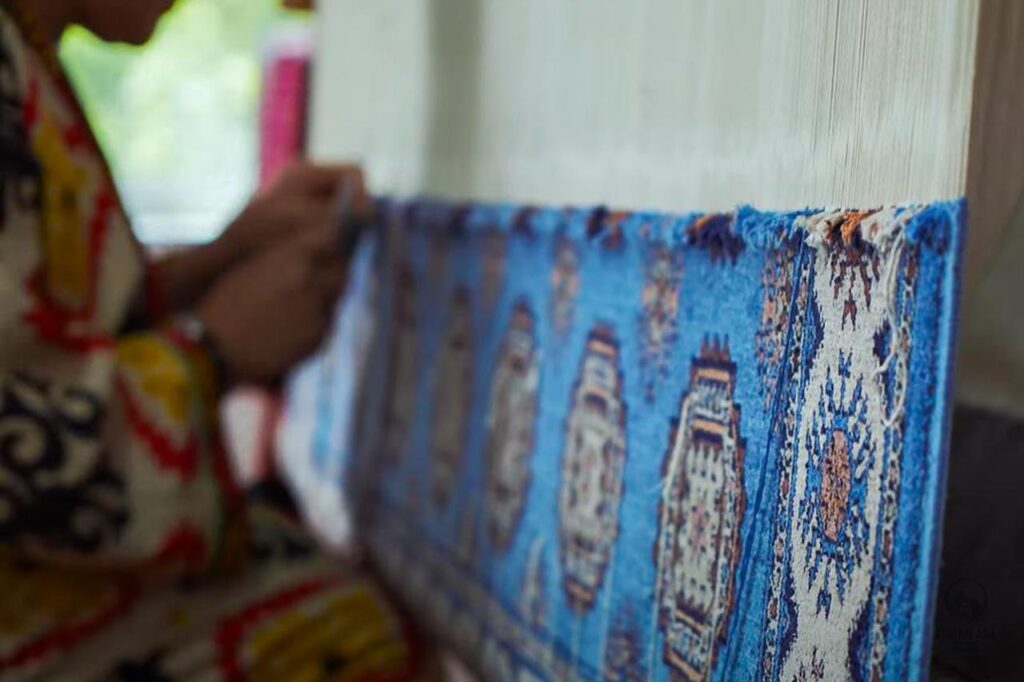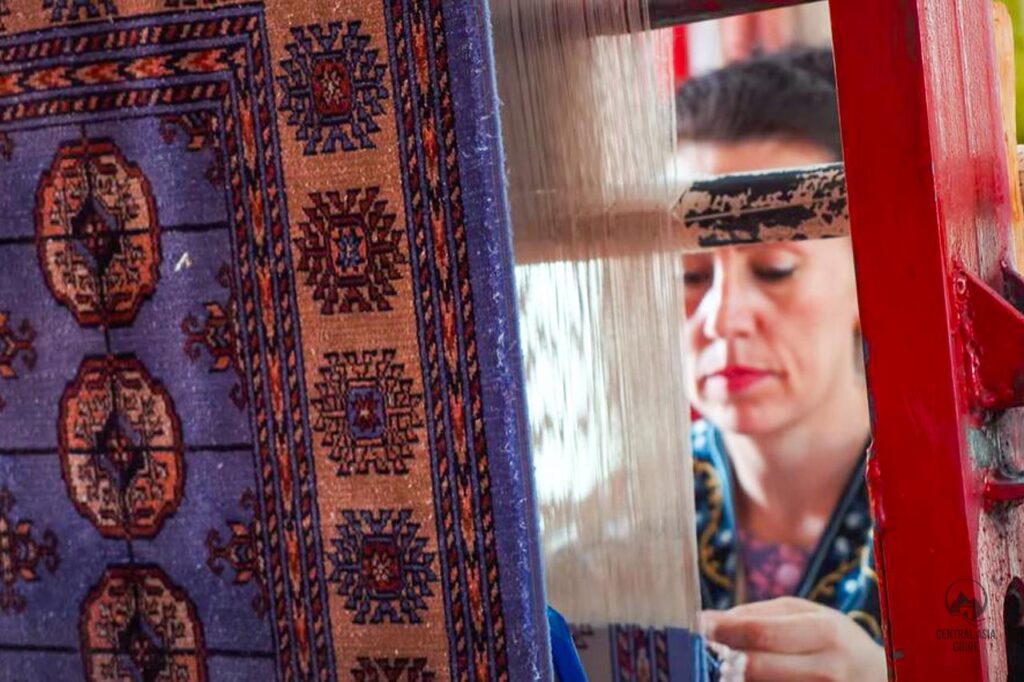Turkmen carpet
Turkmenistan Carpet
Turkmenistan rug is a kind of handmade floor-covering textile traditionally developing around Central Asia. The authentic Turkmen rugs were made by the tribes who are the main ethnic group in Turkmenistan as well as also found in Afghanistan and Iran. They are used for different purposes, such as tent rugs, door hangings, and bags of various sizes.
Turkmenistan carpets are known for their complex and colorful designs, as well as the high quality of the wool used in their production. The carpet weaving tradition in Turkmenistan dates back many centuries, and the craft is a vital part of the country’s cultural heritage. Turkmen carpets are highly valued by collectors and are often used as wall hangings or floor coverings in homes and public buildings. The unique patterns and use of natural dyes make Turkmen carpets stand out, and they are considered among the finest examples of traditional rug-making in the world. Traditional Turkmen carpet-making craft has been inscribed on the list of the Intangible Cultural Heritage of Humanity of UNESCO in 2019.


Turkmen Carpet patterns
Carpets, mostly in deep red color, and featuring a repeated motif known as a Gul means the flower, are a great source of pride to the Turkmen. They were among the most precious possessions of Turkmen nomads, the walls and floors of whose yurts were decorated with carpets. Turkmenistan celebrates an annual Carpet Day, and the national flag incorporates the flower typical of carpets from each of the country’s five regions.
The flower is, in effect, an emblem of the tribe. There is much debate as to the meaning of each of the patterns. If you visit Ashgabat Carpet muses, the guides will explain to you the very everything about Turkmen carpets. For instance, the flower characteristics of the Tekke tribe are divided into four parts to represent the seasons, its alternating white and dark colors symbolizing day and night.
Within each of the four parts, the three designs resembling birds’ feet may each represent a month, which makes the whole design a kind of calendar flower. The four colors used in the making of the carpet – orange, white, red, and black – are said to represent the elements, respectively, of earth, air, fire, and water. The guides identify in the flower of the Yomud tribe, which occupies the Caspian shores of western Turkmenistan, many marine-related items. Thus the elongated shape of the flower is said to represent a boat, or possibly a fish, and the design features repeated anchor shapes. Around the edges of Yomud carpets may be identified a pattern resembling seashells intertwined with seaweed.
Turkmen Carpet weavers
Turkmen carpets have traditionally been woven by women, and the Turkmen carpet industry is still based firmly around hand weaving. At the carpet factories across Turkmenistan run by the state concern Turkmenhaly, most of the employees are teenage girls and young women, who sit, several weavers on a loom, building the memorized pattern at a furious pace. Most of the wool is, however, colored with synthetic rather than natural dyes, a legacy of Soviet modernization.


Antique Turkmen carpet export customs regulations
If you bought any carpet over 6 sq m you are required to get permission to export the carpet from the state authorized regulators. It is best to take your carpet to the Carpet Museum in Ashgabat, where there is a bureau that will value and tax your purchase, and provide an export license. It may take a few working days as well as there are several fees to pay. Therefore, you should plan in advance if you wish to acquire any souvenirs such as antique carpets from Turkmenistan. More information you can find on the official website.
See also Crafts of other Central Asian countries
Page updated 2.2.2023